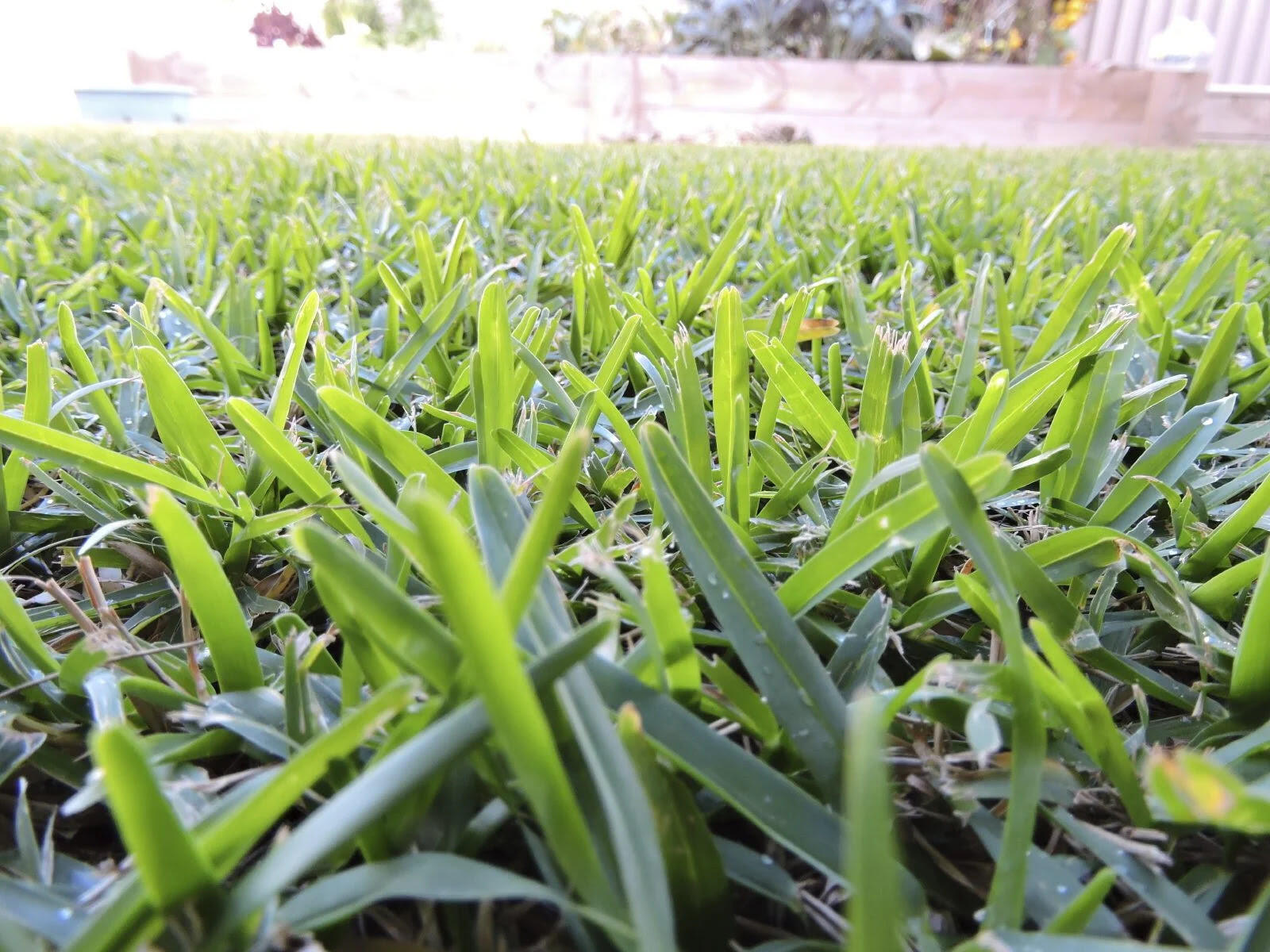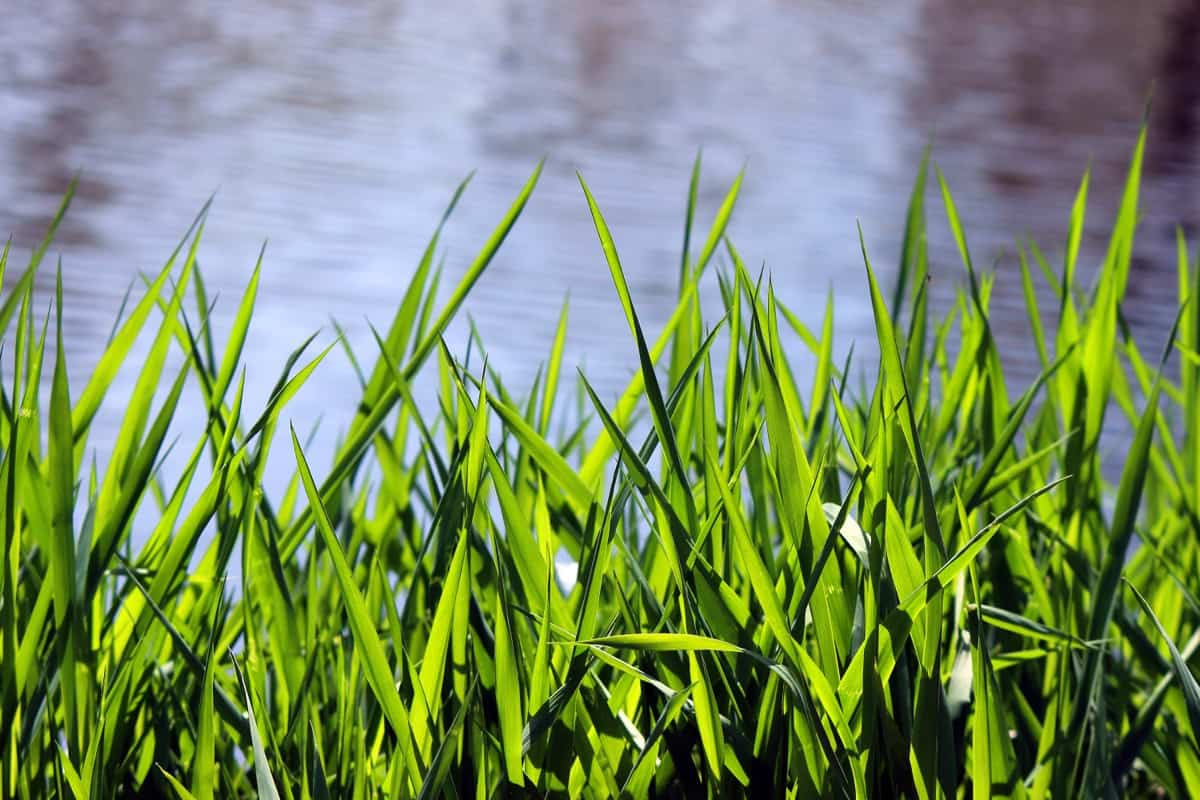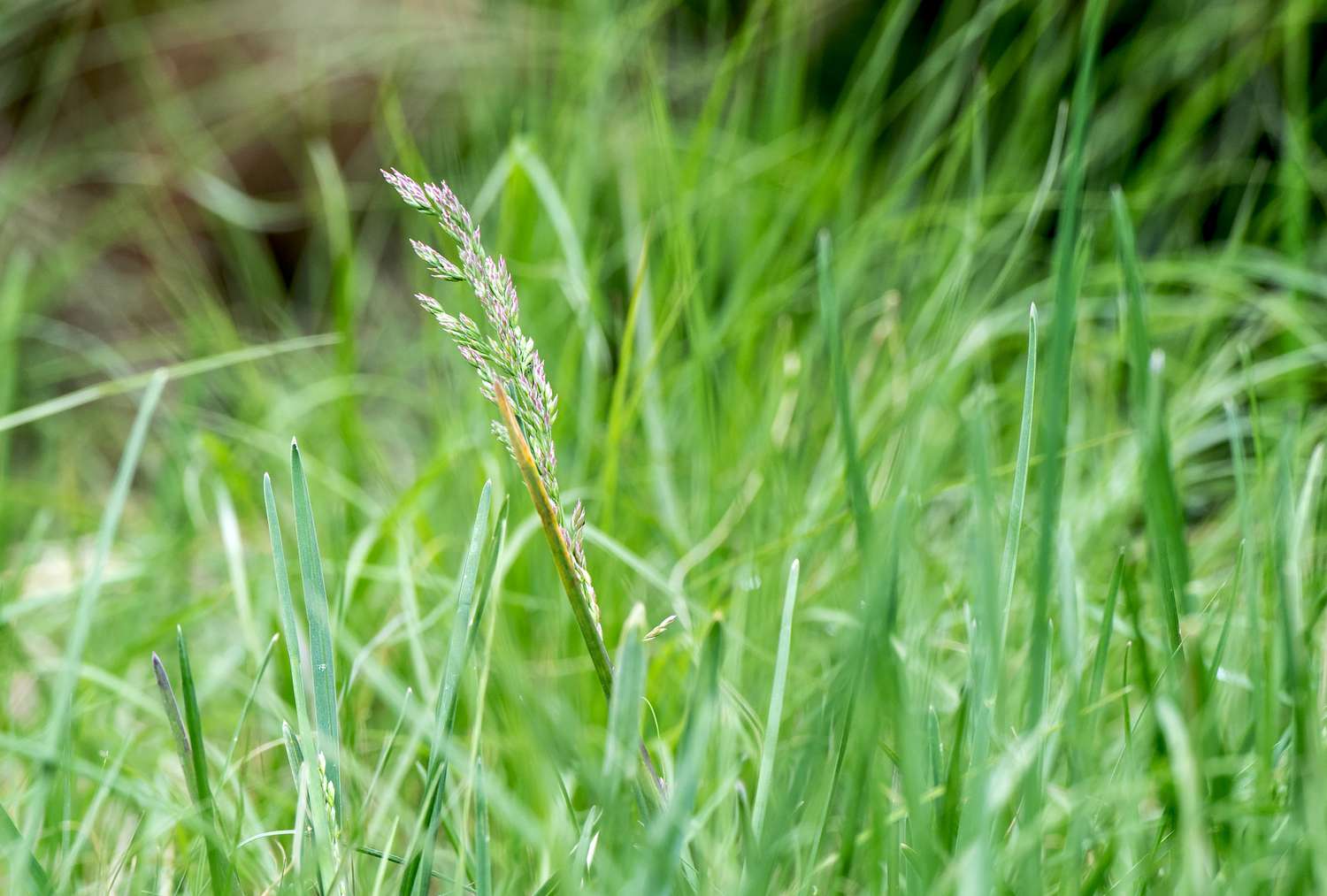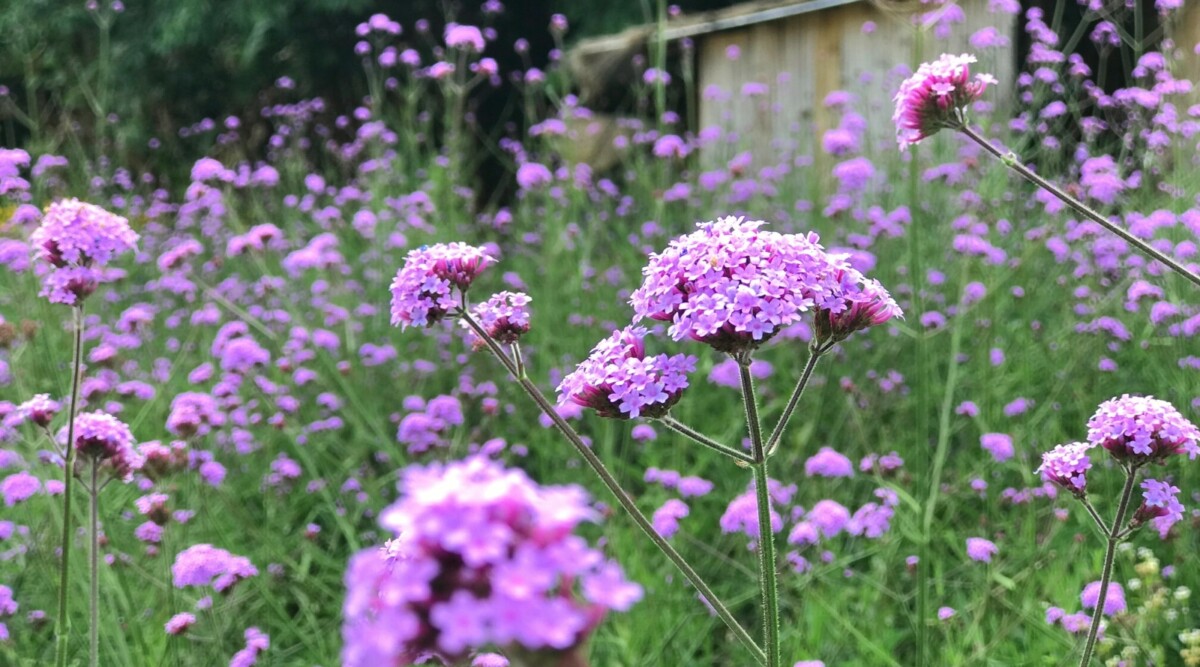Home>Garden Essentials>When To Plant Buffalo Grass Seed


Garden Essentials
When To Plant Buffalo Grass Seed
Modified: April 23, 2024
Looking to plant buffalo grass seed in your garden? Learn when is the best time to sow and how to ensure a successful growth with our expert tips.
(Many of the links in this article redirect to a specific reviewed product. Your purchase of these products through affiliate links helps to generate commission for Storables.com, at no extra cost. Learn more)
Introduction
Welcome to the world of buffalo grass! If you’re a gardening enthusiast or someone looking to enhance the beauty of your lawn, buffalo grass may be just what you need. This versatile grass species is known for its durable nature, low maintenance requirements, and attractive appearance.
In this article, we will delve into the world of buffalo grass and explore when the best time is to plant buffalo grass seed. We will also discuss the factors to consider before embarking on the planting process, the steps involved in planting buffalo grass seed, and some tips for successful cultivation and maintenance.
So, whether you’re a seasoned gardener or a beginner, let’s dig in and discover the wonders of buffalo grass and how to create a stunning lawn with it.
Key Takeaways:
- Plant buffalo grass seed in late spring or early summer for optimal growth. Consider factors like climate, sunlight, and soil type for a thriving lawn.
- Prepare the soil, water consistently, and maintain the lawn to enjoy a lush and resilient buffalo grass turf. With proper care, you’ll have a beautiful, low-maintenance lawn.
Read more: When Is The Best Time To Plant Buffalo Grass
Understanding Buffalo Grass
Before we jump into the planting process, it’s important to have a good understanding of buffalo grass. Buffalo grass, scientifically known as Buchloe dactyloides, is a native American prairie grass that has gained popularity as a turfgrass option due to its numerous benefits.
One of the standout features of buffalo grass is its ability to withstand harsh weather conditions and adapt to various soil types. It is well-known for its tolerance to drought, heat, and high salinity, making it an ideal choice for areas with challenging environmental conditions.
Buffalo grass has a dense growth habit, which helps to suppress weeds and reduce the need for excessive maintenance. It forms a lush green carpet with a soft texture that is pleasant to walk on. Additionally, the grass has an attractive blue-green color that adds a touch of natural beauty to any landscape.
Another advantage of buffalo grass is its low water requirement. It has a deep root system that enables it to access moisture from deeper soil layers, reducing the need for frequent watering compared to other grass varieties. This not only saves water but also makes buffalo grass a great choice for eco-conscious gardeners.
Furthermore, buffalo grass has a slow growth rate, which means it doesn’t require as much mowing as other grass types. This makes it a time-saving option for those who prefer to spend less time on lawn maintenance.
Overall, buffalo grass is a hardy, low-maintenance, and water-efficient grass variety that offers plenty of benefits for homeowners and gardeners.
Factors to Consider Before Planting Buffalo Grass Seed
While buffalo grass is a resilient and versatile turfgrass, there are a few key factors to keep in mind before you start planting buffalo grass seed.
1. Climate: Buffalo grass thrives in warm-season regions with moderate to hot climates. It grows best in areas with temperatures ranging from 60 to 90 degrees Fahrenheit (15 to 32 degrees Celsius). If you live in a cooler climate, buffalo grass may not be the best choice as it can struggle to survive in colder temperatures.
2. Sunlight: Buffalo grass is a sun-loving grass variety and requires at least 6 to 8 hours of direct sunlight per day. Make sure your lawn or planting area receives ample sunlight for the grass to flourish.
3. Soil Type: Buffalo grass is adaptable to different soil types but prefers well-drained soil. It can tolerate clay, sandy, or loamy soil as long as it’s not excessively compacted or prone to waterlogging. Conduct a soil test to check the pH and fertility levels of your soil, as buffalo grass thrives in pH levels between 6 and 7.
4. Watering Needs: Buffalo grass is a drought-tolerant grass species, but during establishment, it will require regular watering to ensure successful germination and root development. Consider your water availability and restrictions before deciding to plant buffalo grass.
5. Usage and Traffic: Buffalo grass is great for low to medium traffic areas such as residential lawns and parks. However, if you have high foot traffic or pets, you might need to consider other grass alternatives that can better withstand heavy usage.
6. Maintenance Expectations: While buffalo grass is known for its low maintenance requirements, it still requires some level of care. Be prepared to invest time and effort in proper mowing, watering, and occasional fertilization to keep the grass looking lush and healthy.
By taking these factors into account, you can ensure the success and longevity of your buffalo grass lawn. Planning and preparation are key to establishing a thriving buffalo grass turf.
Best Time to Plant Buffalo Grass Seed
The timing of planting buffalo grass seed plays a crucial role in its successful establishment and growth. The best time to plant buffalo grass seed is during the late spring or early summer when the soil temperatures are consistently warm.
Buffalo grass is a warm-season grass variety that thrives in temperatures between 60 and 90 degrees Fahrenheit (15 to 32 degrees Celsius). Planting the seed during this period allows it to take advantage of the warm soil temperatures, which promote faster germination and root development.
Here are some key reasons why late spring and early summer are ideal for planting buffalo grass seed:
1. Soil Temperature: Soil that is too cold can inhibit germination and slow down the establishment process. By planting buffalo grass seed when the soil is consistently warm, typically around 70 degrees Fahrenheit (21 degrees Celsius), you can ensure optimal conditions for seed germination and root growth.
2. Growing Season: Planting buffalo grass seed before the peak of summer allows the grass to establish a strong root system and develop good turf coverage before the stress of hot summer temperatures. This helps the grass withstand the summer heat and maintain its health and vigor.
3. Rainfall Patterns: Late spring and early summer often coincide with periods of increased rainfall, providing the necessary moisture for seed germination and early growth. Be sure to monitor the weather forecast and aim for a period of consistent rainfall or plan to supplement watering if needed.
However, it’s important to note that the best planting time may vary depending on your specific location and climate. If you live in an area with mild winters and warm year-round temperatures, you may have more flexibility in planting buffalo grass seed. Consulting with a local gardening expert or extension service can provide valuable insight into the optimal planting time for your region.
In summary, late spring and early summer provide the ideal conditions for planting buffalo grass seed due to warm soil temperatures, a favorable growing season, and potential rainfall. By timing your planting correctly, you can give your buffalo grass the best chance to thrive and create a beautiful, lush lawn.
Buffalo grass seed should be planted in late spring or early summer when the soil temperature reaches 60-80°F. This will give the seeds the best chance to germinate and establish before the cooler fall weather sets in.
Steps to Plant Buffalo Grass Seed
Planting buffalo grass seed requires careful preparation and execution to ensure successful establishment. Here are the steps to follow when planting buffalo grass seed:
1. Prepare the Soil: Start by preparing the soil before planting. Remove any existing vegetation, rocks, or debris. Loosen the soil using a tiller or garden rake to a depth of about 4 to 6 inches (10 to 15 cm). This will promote good seed-to-soil contact and allow for proper root penetration.
2. Conduct a Soil Test: Take a sample of the soil and conduct a soil test to determine its pH level and nutrient content. Buffalo grass thrives in slightly acidic to neutral soil with a pH range between 6 and 7. Based on the soil test results, you may need to amend the soil with lime or sulfur to adjust the pH, and provide any necessary nutrients through organic matter or fertilizer.
3. Seed Selection: Choose high-quality buffalo grass seed from a reputable supplier. Opt for a variety that is well-suited to your region and climate conditions. Consider factors such as drought tolerance, disease resistance, and overall performance.
4. Seed Application: Spread the buffalo grass seed evenly over the prepared soil. Use a broadcast spreader or hand-held spreader to ensure uniform distribution. It is recommended to apply the seed at a rate of 1 to 2 pounds per 1,000 square feet (0.5 to 1 kg per 93 square meters).
5. Rake and Roll: Once the seed is evenly spread, lightly rake the soil to cover the seed with a thin layer of soil. Avoid burying the seed too deep as it may hinder germination. After raking, lightly roll the area with a lawn roller or gently press the soil with your feet to increase seed-to-soil contact.
6. Watering: After planting, thoroughly water the area to ensure the soil is evenly moist. It’s important to keep the soil consistently moist during the germination and establishment period. Water regularly but avoid overwatering, as it can lead to poor growth and disease issues.
7. Maintenance: Once the buffalo grass seed starts to germinate, continue to monitor moisture levels and water as needed. Keep foot traffic to a minimum during this establishment phase. After the grass reaches a height of around 3 to 4 inches (7 to 10 cm), you can gradually reduce watering frequency and start mowing.
By following these steps, you can ensure proper planting of buffalo grass seed and set the foundation for a healthy and lush buffalo grass lawn.
Read more: How To Plant Buffalo Grass
Tips for Successful Buffalo Grass Seed Planting
Planting buffalo grass seed can be a rewarding experience that transforms your lawn into a beautiful and resilient space. Here are some tips to ensure successful buffalo grass seed planting:
1. Proper Seedbed Preparation: Take the time to properly prepare the soil before planting. Remove weeds, rocks, and debris that can hinder the growth of buffalo grass. Loosen the soil to promote good seed-to-soil contact and ensure optimal root penetration.
2. Watering: Buffalo grass seed requires adequate moisture to germinate and establish. Water the planting area thoroughly after seeding to keep the soil consistently moist. Ensure that the soil doesn’t dry out during the germination period, as this can hinder seedling growth.
3. Avoid Over-Seeding: It’s important not to over-seed buffalo grass, as the grass tends to establish well from a reasonably low seeding rate. Over-seeding can lead to competition for resources and result in poor growth. Follow the recommended seeding rate for the specific buffalo grass variety you have chosen.
4. Optimal Planting Time: As mentioned earlier, planting buffalo grass seed during late spring or early summer when soil temperatures are warm is preferred. This ensures optimal conditions for seed germination and establishment. Avoid planting during periods of extreme heat or cold, as it can hinder successful growth.
5. Seed Depth: Plant buffalo grass seed at the proper depth. A general rule of thumb is to plant the seed no deeper than 1/4 inch (0.6 cm). Planting too shallow can result in seed drying out, while planting too deep can hinder germination and emergence.
6. Control Weeds: Prior to planting buffalo grass seed, take steps to control weeds in the planting area. This will prevent competition for nutrients, water, and sunlight. Consider using a pre-emergent herbicide that targets common weed species in your area.
7. Monitor and Adjust: Keep a close eye on the planted area and make adjustments as needed. This includes monitoring moisture levels, adjusting watering frequency as the seedlings grow, and addressing any signs of weed encroachment or pest issues.
8. Avoid Heavy Traffic: To give buffalo grass seedlings the best chance to establish, minimize foot traffic and other activities that can put stress on the developing grass. Restrict access to the seeded area until the grass has reached a sufficient height and has become well-established.
9. Regular Maintenance: Once the buffalo grass is established, follow a regular maintenance routine. This includes proper mowing, fertilizing, and watering techniques to keep the grass healthy and vibrant.
By following these tips, you can improve the success rate of your buffalo grass seed planting and enjoy the benefits of a lush and resilient lawn for years to come. Remember, patience and consistent care are key to achieving a thriving buffalo grass turf.
Maintenance and Care of Buffalo Grass Seed
Maintaining and caring for buffalo grass seed is essential to ensure its long-term success and vitality. Here are some important guidelines to follow for the maintenance and care of buffalo grass seed:
1. Watering: Proper watering is crucial during the early stages of buffalo grass growth. After the seed has germinated, continue to water the soil consistently to keep it moist. Aim to provide approximately 1 inch (2.5 cm) of water per week, either through rainfall or irrigation, to support healthy root development.
2. Mowing: Once the buffalo grass reaches a height of around 3 to 4 inches (7 to 10 cm), it can be mowed for the first time. Set the mower height to about 2 to 3 inches (5 to 7.5 cm) for buffalo grass, as this will encourage a thick and lush turf. Avoid cutting more than one-third of the grass blade height at a time to prevent stress on the plants.
3. Fertilization: Buffalo grass is known for its low fertility needs. Apply a slow-release, low-nitrogen fertilizer during the spring or early summer to provide the grass with essential nutrients. Follow the recommended application rates based on your specific buffalo grass variety and soil conditions. Avoid excessive fertilization, as it can lead to thatch buildup and reduce the stress tolerance of the grass.
4. Weed Control: Regularly monitor your buffalo grass lawn for the presence of weeds. Hand-pull or spot spray weeds using an appropriate herbicide specifically labeled for use with buffalo grass. Be sure to follow the instructions and guidelines provided by the manufacturer to avoid any damage to the grass.
5. Disease and Pest Management: Buffalo grass is naturally resistant to many common diseases and pests. However, it is still important to be vigilant and take preventative measures. Keep the lawn properly maintained, aerate as needed, and address any signs of disease or pest infestation promptly. Consult with a local gardening expert or extension service if you notice any unusual symptoms.
6. Aerate the Soil: Periodically aerate the soil to allow for better air and water penetration. This helps prevent soil compaction, promotes root growth, and improves the overall health of the buffalo grass. Use a core aerator to remove small plugs of soil from the lawn.
7. Overseeding and Renovation: In areas of thin or bare spots, consider overseeding with buffalo grass seed to encourage denser growth. Overseeding can be done during the late spring or early summer when soil temperatures are warm. If your buffalo grass lawn requires a complete renovation, consult with a local professional for the best approach.
By following these maintenance and care guidelines, you can maintain the health and beauty of your buffalo grass lawn. Consistency, proper watering, mowing, fertilization, and vigilant pest control are key to a thriving buffalo grass turf that will bring enjoyment for years to come.
Conclusion
Congratulations on learning about buffalo grass and its planting process! By now, you should have a solid understanding of this versatile grass species and the best practices for planting buffalo grass seed. With its resilience, low maintenance requirements, and attractive appearance, buffalo grass is an excellent choice for creating a beautiful and durable lawn.
Before planting buffalo grass seed, consider factors such as climate, sunlight, soil type, and water availability. These elements will play a crucial role in the success of your buffalo grass lawn. Timing is key, and planting during late spring or early summer when soil temperatures are warm will give your buffalo grass seed the best chance to thrive.
Follow the steps of soil preparation, seed application, watering, and maintenance to establish a healthy buffalo grass turf. Remember to provide adequate water during the germination period, mow at the proper height, and fertilize as needed to keep your buffalo grass looking lush and vibrant.
Maintaining your buffalo grass seed includes regular monitoring, weed control, disease and pest management, as well as proper aeration of the soil. By giving your buffalo grass the care and attention it needs, you’ll enjoy a lawn that stays green and resilient for years to come.
Whether you’re a seasoned gardener or a beginner, buffalo grass seed planting is a rewarding endeavor that allows you to create a stunning and low-maintenance lawn. Enjoy the beauty and benefits that buffalo grass brings, from its drought tolerance to its ability to withstand various weather conditions.
So, get ready to transform your lawn into a vibrant oasis with the resilient and attractive buffalo grass. With proper planning, preparation, and care, you’ll have a lawn that not only enhances the aesthetic appeal of your property but also provides a durable and enjoyable space for relaxation and recreation.
Frequently Asked Questions about When To Plant Buffalo Grass Seed
Was this page helpful?
At Storables.com, we guarantee accurate and reliable information. Our content, validated by Expert Board Contributors, is crafted following stringent Editorial Policies. We're committed to providing you with well-researched, expert-backed insights for all your informational needs.















0 thoughts on “When To Plant Buffalo Grass Seed”